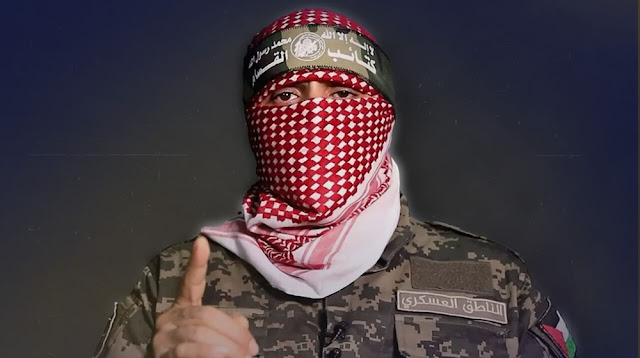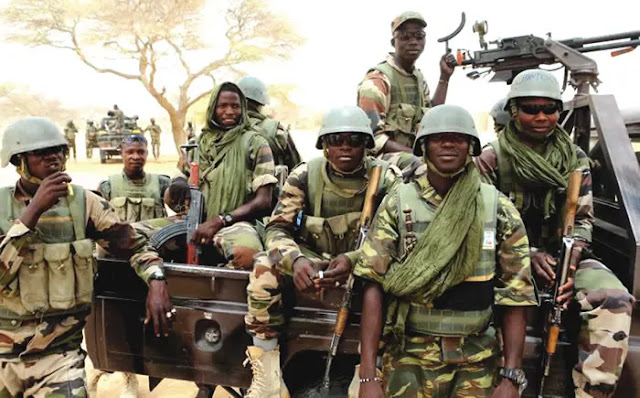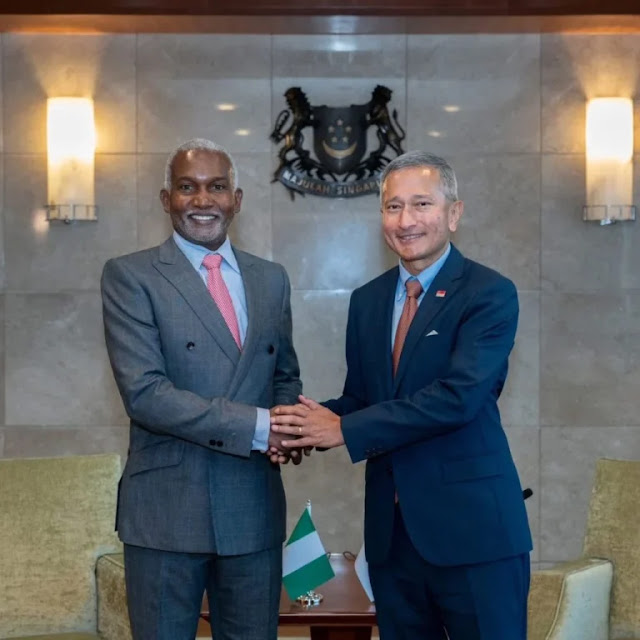Gaza City, Palestine – In a defiant statement issued on August 29, 2025, the Palestinian resistance movement Hamas, through its military wing, the al-Qassam Brigades, vowed that the Israeli military would pay a heavy price in blood and face the capture of its soldiers as it intensifies its offensive in Gaza City. The warning, delivered by al-Qassam Brigades spokesperson Abu Obeida, came hours before an ambush in the Zaytoun neighborhood of Gaza City resulted in the death of one Israeli soldier, injuries to nine others, and fears that four additional soldiers may have been taken captive. This development marks a significant escalation in the ongoing conflict, underscoring the resilience of Palestinian resistance fighters and the challenges facing Israel’s military campaign in the besieged Gaza Strip.
Abu Ubaida, the spokesperson for the Ezzedeen al-Qassam Brigades, the military wing of the Palestinian resistance group, Hamas. (File photo)
The statement from Abu Obeida was a direct response to Israel’s recently approved plan to occupy Gaza City, the largest urban center in the Gaza Strip, which the Israeli military declared a “combat zone” on Friday. The operation, described as the “initial stages” of a takeover, has drawn sharp condemnation from Hamas, which warned that the offensive would lead to significant losses for Israeli forces and increase the likelihood of capturing new prisoners. The ambush in Zaytoun, coupled with Abu Obeida’s remarks, highlights the volatile situation on the ground and raises questions about the feasibility of Israel’s military objectives in Gaza.
Abu Obeida’s Defiant Message
In his statement, Abu Obeida accused Israeli Prime Minister Benjamin Netanyahu and his cabinet, whom he described as “Nazi ministers,” of pursuing a reckless strategy that would halve the number of Israeli captives held by Hamas while causing the permanent disappearance of many fallen soldiers’ bodies. “The plans to occupy Gaza City will cost the enemy’s army in the blood of its soldiers and will increase the chances of capturing new soldiers, God willing,” he declared, emphasizing the resistance’s readiness to confront the Israeli military head-on.
Abu Obeida underscored that Hamas fighters are in a “state of high alert, preparedness, and morale,” prepared to deliver “exemplary models of heroism and perseverance” in the face of Israel’s ground offensive. He warned that the resistance would teach the Israeli military “harsh lessons,” signaling a fierce and uncompromising response to the escalating aggression. The spokesperson also addressed the fate of Israeli captives held by Hamas, stating that the group would do its best to protect them but acknowledged that they would face the same risks and conditions as Hamas fighters in combat zones. “We will announce every prisoner killed due to the aggression, along with their name, photo, and proof of their death,” he added, placing full responsibility for any casualties among the captives on Israel’s military and political leadership.
The statement reflects Hamas’s broader strategy of combining military resistance with psychological warfare, aiming to undermine Israel’s confidence in its military operations while rallying Palestinian support. By highlighting the risks to Israeli captives and soldiers, Abu Obeida sought to pressure the Israeli government and expose the human cost of its policies in Gaza.
The Zaytoun Ambush: A Tactical Setback
Hours after Abu Obeida’s statement, reports emerged of a deadly ambush in the Zaytoun neighborhood of Gaza City, where Palestinian resistance fighters engaged Israeli forces in intense combat. According to Israeli media, the clash resulted in the death of one Israeli soldier, injuries to nine others, and concerns that four additional soldiers may have been captured. The Israeli military has yet to confirm the status of the missing soldiers, but the incident has been described by experts as a “significant tactical setback” for Israel, undermining its narrative of military superiority over Hamas.
The ambush occurred as Israeli forces began implementing their plan to occupy Gaza City, which was approved earlier in August 2025. The operation, which involves deploying ground troops and heavy weaponry, aims to assert control over the densely populated urban center, a stronghold of Palestinian resistance. However, the resistance’s swift and coordinated response in Zaytoun demonstrates the challenges Israel faces in achieving its objectives. Israeli helicopters were reportedly deployed to evacuate soldiers under heavy fire, highlighting the intensity of the confrontation and the precarious situation on the ground.
Analysts note that the ambush not only inflicted casualties but also exposed vulnerabilities in Israel’s military strategy. The fear of captured soldiers adds a layer of complexity to the operation, as the issue of Israeli captives has long been a sensitive topic in Israeli society. Hamas’s ability to strike effectively in Gaza City, despite Israel’s overwhelming military advantage, underscores the resilience and adaptability of the resistance movement, which has honed its tactics over years of conflict.
Israel’s Escalation in Gaza
Israel’s decision to occupy Gaza City marks a significant escalation in its ongoing war on the Gaza Strip, which began on October 7, 2023, following a surprise attack by Hamas that killed over 1,200 Israelis and led to the capture of numerous hostages. In response, Israel launched a campaign described by critics as genocidal, resulting in the deaths of at least 63,025 Palestinians and injuries to 159,490 others, the majority of whom are women and children, according to Gaza’s health ministry. The campaign has involved relentless airstrikes, ground incursions, and a crippling blockade that has exacerbated humanitarian conditions in the besieged territory.
The plan to occupy Gaza City, announced earlier in August 2025, represents a shift in Israel’s strategy, moving from targeted operations to a broader effort to control key urban centers. The Israeli military has justified the operation as necessary to dismantle Hamas’s infrastructure and prevent further attacks. However, the declaration of Gaza City as a “combat zone” has raised alarms about the potential for widespread destruction and displacement. The United Nations Relief and Works Agency for Palestine Refugees (UNRWA) has warned that the offensive could forcibly displace up to one million Palestinians, further compounding the humanitarian crisis in Gaza.
The operation has drawn sharp criticism from international observers, who argue that it violates international humanitarian law and exacerbates the suffering of Gaza’s civilian population. The targeting of densely populated areas, coupled with the blockade, has led to accusations of collective punishment and war crimes. The international community, including the United Nations, has called for an immediate ceasefire and the protection of civilian lives, but these appeals have largely gone unheeded.
Hamas’s Resilience and Strategy
Hamas’s response to Israel’s escalation reflects its long-standing strategy of asymmetric warfare, leveraging its knowledge of the terrain, guerrilla tactics, and popular support to counter Israel’s military superiority. The al-Qassam Brigades, Hamas’s military wing, have developed a sophisticated network of tunnels, command centers, and supply lines that enable them to operate effectively despite Israel’s advanced weaponry and surveillance capabilities. The ambush in Zaytoun is a testament to the group’s ability to strike at critical moments, exploiting weaknesses in Israeli operations.
Abu Obeida’s statement also highlights Hamas’s psychological warfare tactics, aimed at both demoralizing Israeli forces and galvanizing Palestinian resistance. By emphasizing the risks to Israeli captives and soldiers, Hamas seeks to pressure the Israeli government into reconsidering its military strategy. The group’s commitment to announcing the deaths of captives, complete with names and proof, is a calculated move to maximize the political and emotional impact on Israeli society, where the issue of hostages is highly sensitive.
Hamas’s resilience is further bolstered by its ideological commitment and popular support among Palestinians, who view the group as a symbol of resistance against Israeli occupation. Despite the devastating toll of the war, Hamas has maintained its operational capabilities, continuing to launch rockets, conduct ambushes, and engage in urban warfare. This resilience has challenged Israel’s narrative that Hamas is on the verge of defeat, forcing the Israeli military to confront the reality of a protracted conflict.
The Humanitarian Crisis in Gaza
The escalation in Gaza City comes against the backdrop of a dire humanitarian crisis in the Gaza Strip. Since October 2023, Israel’s military campaign has devastated the territory’s infrastructure, destroying homes, schools, hospitals, and essential services. The blockade, which restricts the flow of food, medicine, and fuel, has pushed Gaza’s 2.3 million residents to the brink of starvation and disease. The UN has reported that over 80% of Gaza’s population is internally displaced, with many living in overcrowded shelters or makeshift camps.
The push to occupy Gaza City threatens to exacerbate this crisis, with UNRWA warning of the potential displacement of one million people. The designation of Gaza City as a “combat zone” has led to widespread panic, as residents fear intensified airstrikes and ground operations. The destruction of civilian infrastructure, including water and electricity networks, has made it increasingly difficult for residents to access basic necessities, while the targeting of hospitals has hindered the provision of medical care to the wounded.
The international community has faced growing pressure to address the humanitarian crisis in Gaza. Humanitarian organizations, including Médecins Sans Frontières and the International Committee of the Red Cross, have called for unrestricted access to deliver aid and protect civilians. However, Israel’s restrictions on aid deliveries and the ongoing fighting have made it nearly impossible to meet the needs of Gaza’s population.
International Reactions and Geopolitical Implications
The escalation in Gaza City has drawn varied responses from the international community. The United States, Israel’s primary ally, has reiterated its support for Israel’s right to defend itself, while urging restraint to minimize civilian casualties. However, the U.S. has faced criticism for its continued military and financial support to Israel, which critics argue enables the ongoing violence. The Biden administration has called for negotiations to secure the release of Israeli captives, but these efforts have been complicated by the intensification of hostilities.
Arab and Muslim-majority countries, including Egypt, Qatar, and Turkey, have condemned Israel’s actions and called for an immediate ceasefire. Egypt and Qatar, which have previously mediated ceasefire agreements between Israel and Hamas, have expressed concern about the potential for further escalation and are working to broker talks. Turkey has taken a more confrontational stance, with President Recep Tayyip Erdoğan accusing Israel of committing genocide and calling for international sanctions.
The United Nations Security Council has been unable to adopt a unified stance due to divisions among its permanent members. The U.S. has vetoed resolutions calling for a ceasefire, citing Israel’s security concerns, while Russia and China have criticized the U.S. for enabling Israel’s actions. The UN General Assembly, however, has passed several resolutions condemning Israel’s conduct and calling for humanitarian aid to Gaza, though these resolutions lack enforcement mechanisms.
The conflict’s geopolitical implications extend beyond the Middle East, influencing global alliances and security dynamics. Iran, a key supporter of Hamas, has warned that Israel’s actions could lead to a broader regional conflict, potentially involving Hezbollah in Lebanon and other Iran-backed groups. The escalation has also strained relations between Israel and its Abraham Accords partners, such as the United Arab Emirates and Bahrain, which face domestic pressure to address the Palestinian issue.
The Question of Israeli Captives
The issue of Israeli captives held by Hamas remains a central point of contention in the conflict. Since October 7, 2023, Hamas has held dozens of captives, including soldiers and civilians, using them as leverage in negotiations with Israel. The group has demanded the release of Palestinian prisoners and an end to the blockade in exchange for the captives’ freedom. However, talks mediated by Egypt and Qatar have repeatedly stalled, with both sides accusing each other of intransigence.
Abu Obeida’s statement that Hamas will protect the captives but cannot shield them from the dangers of combat zones highlights the precarious situation of the hostages. The group’s pledge to announce the deaths of captives with proof is likely to intensify pressure on the Israeli government, which faces domestic demands to secure their release. The fear that four soldiers may have been captured in the Zaytoun ambush adds urgency to these demands, as past cases of captured soldiers, such as Gilad Shalit, have had a profound impact on Israeli society.
Challenges and Prospects for Resolution
The escalation in Gaza City presents significant challenges for both Israel and Hamas. For Israel, the occupation of Gaza City is a high-risk operation that could lead to heavy casualties and further international condemnation. The ambush in Zaytoun underscores the difficulties of urban warfare, where Hamas’s guerrilla tactics and knowledge of the terrain give it a strategic advantage. The potential capture of soldiers could also complicate Israel’s domestic political landscape, as public opinion remains deeply divided over the war.
For Hamas, the challenge lies in sustaining its resistance in the face of overwhelming military pressure and a worsening humanitarian crisis. While the group has demonstrated resilience, the loss of civilian lives and infrastructure has strained its support base, with some Palestinians questioning the cost of continued resistance. However, Hamas’s ideological commitment and popular support among segments of the population ensure that it remains a formidable force.
The prospects for a resolution remain uncertain. A ceasefire agreement, potentially mediated by Egypt and Qatar, could provide a temporary reprieve, but addressing the root causes of the conflict—namely, the Israeli occupation and the blockade of Gaza—requires a more comprehensive approach. International pressure for a two-state solution, based on pre-1967 borders, has gained traction, but political will on both sides remains lacking.
The Broader Context: A History of Conflict
The current escalation is part of a decades-long conflict rooted in the Israeli occupation of Palestinian territories and the struggle for Palestinian self-determination. Since the establishment of Israel in 1948, Palestinians have faced displacement, dispossession, and systemic discrimination, fueling resistance movements like Hamas. The Gaza Strip, home to 2.3 million people, has been under a blockade since 2007, when Hamas took control of the territory, leading to severe economic and humanitarian challenges.
The war that began on October 7, 2023, marked a turning point, with Hamas’s unprecedented attack prompting a devastating Israeli response. The scale of destruction and loss of life has drawn comparisons to previous conflicts, such as the 2014 Gaza War, but the current campaign’s intensity and duration are unprecedented. The occupation of Gaza City represents a new phase in this conflict, with implications for the future of Palestinian resistance and Israeli-Palestinian relations.
Conclusion
Hamas’s vow to make the Israeli military “pay in blood” and its warning of potential soldier captures reflect the intensity of the ongoing conflict in Gaza City. The ambush in Zaytoun, which resulted in the death of one Israeli soldier and fears of additional captives, underscores the challenges facing Israel’s military campaign and the resilience of Palestinian resistance. Abu Obeida’s statement, delivered with defiance and resolve, highlights Hamas’s determination to confront Israel’s escalation, even as the humanitarian crisis in Gaza worsens.
Israel’s plan to occupy Gaza City, coupled with its designation as a “combat zone,” threatens to displace up to one million Palestinians and exacerbate the already catastrophic conditions in the territory. The international community faces mounting pressure to intervene, with calls for a ceasefire and humanitarian aid growing louder. However, deep-seated divisions, both regionally and globally, complicate efforts to achieve a lasting resolution.
As the conflict unfolds, the fate of Israeli captives, the resilience of Hamas, and the suffering of Gaza’s civilian population remain central to the narrative. The escalation in Gaza City is not just a military operation but a reflection of a broader struggle for justice, sovereignty, and survival. The path forward requires bold diplomacy, international cooperation, and a commitment to addressing the root causes of the conflict to prevent further loss of life and pave the way for a just and lasting peace.







